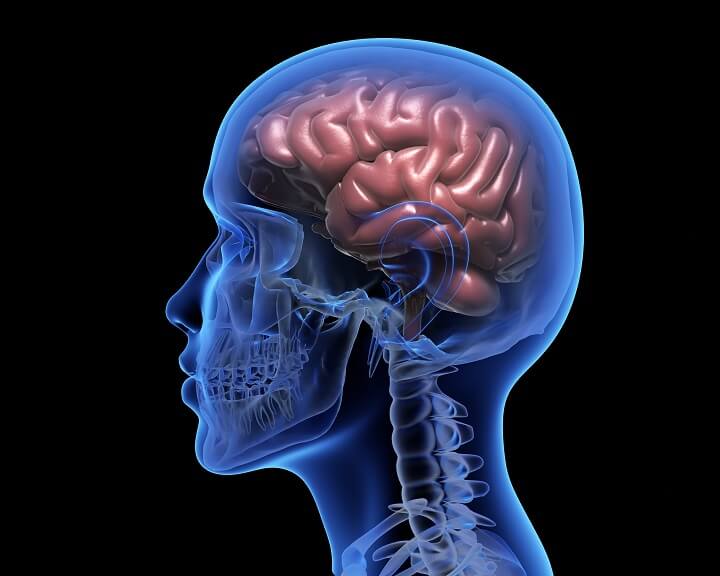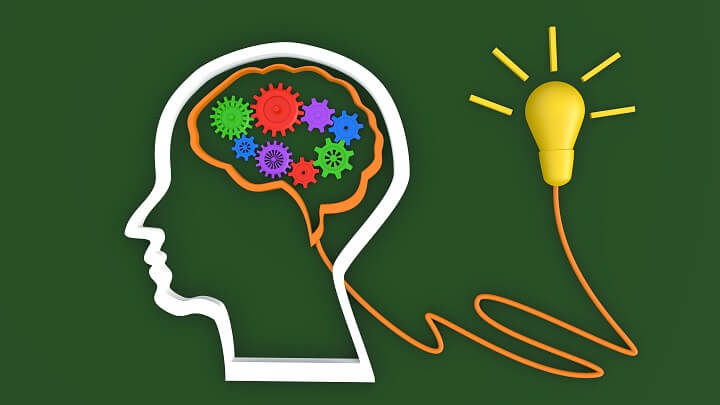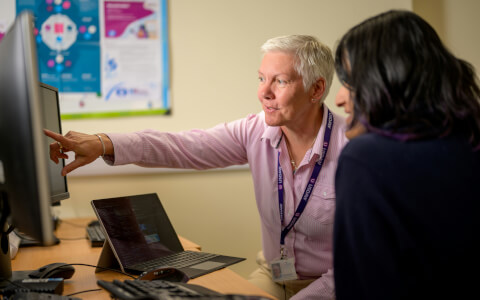One of the biggest challenges of creating a learning and development strategy for an organization is tailoring the training opportunities to people’s preferred way of learning.
Let’s take Jen from accounting, for instance. She may prefer to learn new skills by immersing herself in a topic, while Ben from IT might like a more hands-on approach.
 |
 |
We can probably all think of colleagues who we work with on a regular basis, who think completely different from us and are therefore hard to understand and follow sometimes.
On top of that, you may not see eye-to-eye all the time. Jen’s thinking style may be more analytical, whereas Ben’s thinking style might be more logical.
So how do you create cohesion amongst your employees to aid your organization’s overall productivity and agility?
The answer: with a bit of help and a solid understanding of Whole Brain Thinking (the Whole Brain model).
As the name implies, you can use this strategy to get learners to use their whole brain, not just the areas they’re most likely to use naturally. Encourage your staff to think outside of the box, so to say, and to solve problems in a different way from what they’re used to.
It’s a great way to make your organization’s learning and development strategy more diverse and applicable to a larger cross-section of your staff. Let’s dive deeper into the model, its benefits, and how to implement it into your learning and development strategy.
What is Whole Brain Thinking?
We all have a side of our brain we use most. At some point in time, you’ve probably been told that you either often use the left side of your brain or the right side.
While it’s great to know what your strengths are, it also helps to train the lesser-used parts of your brain. The idea behind the Whole Brain learning theory is that you use all of the areas of your brain during training.
It’s a model that was developed by Ned Herrmann in 1979 after years of research. The model encourages people to use the side of your brain you don’t usually use, to challenge yourself, and to train the less dominant side.
Using Whole Brain Thinking in learning and development means it makes training more engaging for all learners and increases the uptake of new information.
Four thinking styles of the Whole Brain model
Herrmann determined there were four thinking styles to the Whole Brain Thinking model, dividing the brain into four quadrants. Everyone has these four quadrants of their brain, but we often use one or two areas more than the others.
It explains how we all have different ways of thinking and why some of us, like Jen from accounting, prefer straight-up facts while others, such as Ben from IT, prefer to think in terms of processes.
 |
 |
They’re not set in stone either, and they change depending on age, education, emotional insights, and other experiences. The four quadrants of the Whole Brain Thinking model are:
Analytical
This group prefers facts and figures. They use the upper/cerebral left brain the most and respond well to learning goals and objectives in a clear and concise way. They prefer to skim over text to get to the charts, data, and research-backed information.

Practical and structured
This group is the rule followers. They use their lower/limbic left brain and prefer order and procedure. They prefer concise and planned out goal-oriented learning. They would be prepared and ready to follow instructions and prefer step-by-step exercises, checklists, and practical feedback.
Relational
This group is empathic, and they enjoy learning with other people. They use their lower/limbic right brain and work well in teams. They prefer to see the information they need to learn in action through experiences and stories. They are “people people.”

Experimental and creative
This group is the creatives. They prefer abstract ideas and minimal details while exploring ideas and processing the information they’re learning. They use the upper/cerebral right brain most, and generating ideas is what they do best. They prefer lots of visuals to illustrate key information.
How can you apply the Whole Brain Model to your learning and development strategy?
Everyone has different ways of learning new information, making decisions, and solving problems. If your employees understand their own way of thinking and what part of their brain they’re using most often, it can help them improve their communication with others in their team. It can help them grow in their own personal development.
Great managers understand employees have different thinking styles, and they will figure out a way to have different approaches work together to create a productive environment.
You can use Whole Brain Thinking with your team with the aim to engage every part of your employees’ brains. You can do this by implementing different elements into your training package to engage each quadrant, and by encouraging staff to develop the sides of their brain they use less often.

Reassess your current training and development strategy
Always start at the beginning. Before you leap into applying the principles of Whole Brain Thinking into your learning and development strategy, take a pause, and reassess your current L&D strategy.
You’ll most likely find it’s geared toward the same learning methods and elements. Your strategy might be heavy on face-to-face training, or microlearning, or very text-heavy.
Don’t get discouraged by this part of the process though. It’s very common to have your training opportunities leaning toward only one side of the spectrum. It’s good to know this so that you can fill the gaps and create a more diverse learning experience for your employees.
Choose the right learning mix
Whether you’re a fan of the ADDIE model or are looking to use elearning authoring tools as part of your strategy, you can use the Whole Brain teaching rules as an overarching strategy for whatever elearning design you end up with.
Depending on the topic you want to teach your employees, you may decide that a mix of face-to-face learning and microlearning might be the best option. Or perhaps you choose to roll out video training combined with one-on-one sessions with staff.
Whatever combination you decide on, you can apply Whole Brain Thinking to all of those by making sure the course content engages more than one quadrant. That way you engage your employees and give them a nudge to try solving problems in a different way than they’re used to.

Incorporate Whole Brain learning
Once you’ve done the reassessment and analysis of your current learning and development strategy, it’s time to see where you can make some changes to incorporate Whole Brain learning into it.
Focus in particular on creating content that engages more than one of the quadrants. A rich Learning Management System (LMS), such as GoSkills, will help with this. Your employees will be pushed slightly out of their comfort zone when they have to engage brain quadrants that they don’t naturally use.
If a course engages different quadrants it’ll also be more appealing to a wider cross-section of your staff, because everyone learns and behaves differently. Growth happens outside of your comfort zone. Incorporating Whole Brain Thinking into your learning and development strategy will help your employees to understand and work better together with their colleagues and on different tasks.
Test and adjust
It’s great to finally be at the end of your development period and ready to roll out the new learning opportunity for your employees. Now the real fun begins!
Make sure to regularly ask for feedback from learners so that you’re able to adjust the program to their needs as you go. No learning opportunity should be stagnant, so it’s only good if things chop and change depending on what sort of feedback you’re getting from your staff.
Great planning and solid instructional design should mean you hopefully won’t have to change tack completely while rolling out the course. However, small changes along the way based on feedback are always welcome.
Wrapping it up
Implementing Whole Brain learning into your training strategy will create a more diverse learning experience for your employees. This in return will increase their engagement, information retainment, and work satisfaction levels.
Your employees will feel engaged and challenged in learning opportunities by using more than just one or two of the brain’s quadrants. This results in a more robust and versatile workforce in the long term.
Everyone thinks and learns differently. Using the different thinking styles in creating your learning and development strategy or your latest course for staff, will help to create a learning opportunity that will appeal to a wide range of your employees. It’s a win-win!
You can apply Whole Brain learning to your LMS courses to create engaging training opportunities for your employees. Curious? Try GoSkills for free today.
Train any size team
It's easier than ever to track and manage your team's training with the GoSkills LMS.
Start for free



